Fix Your Desk Lighting Sensor
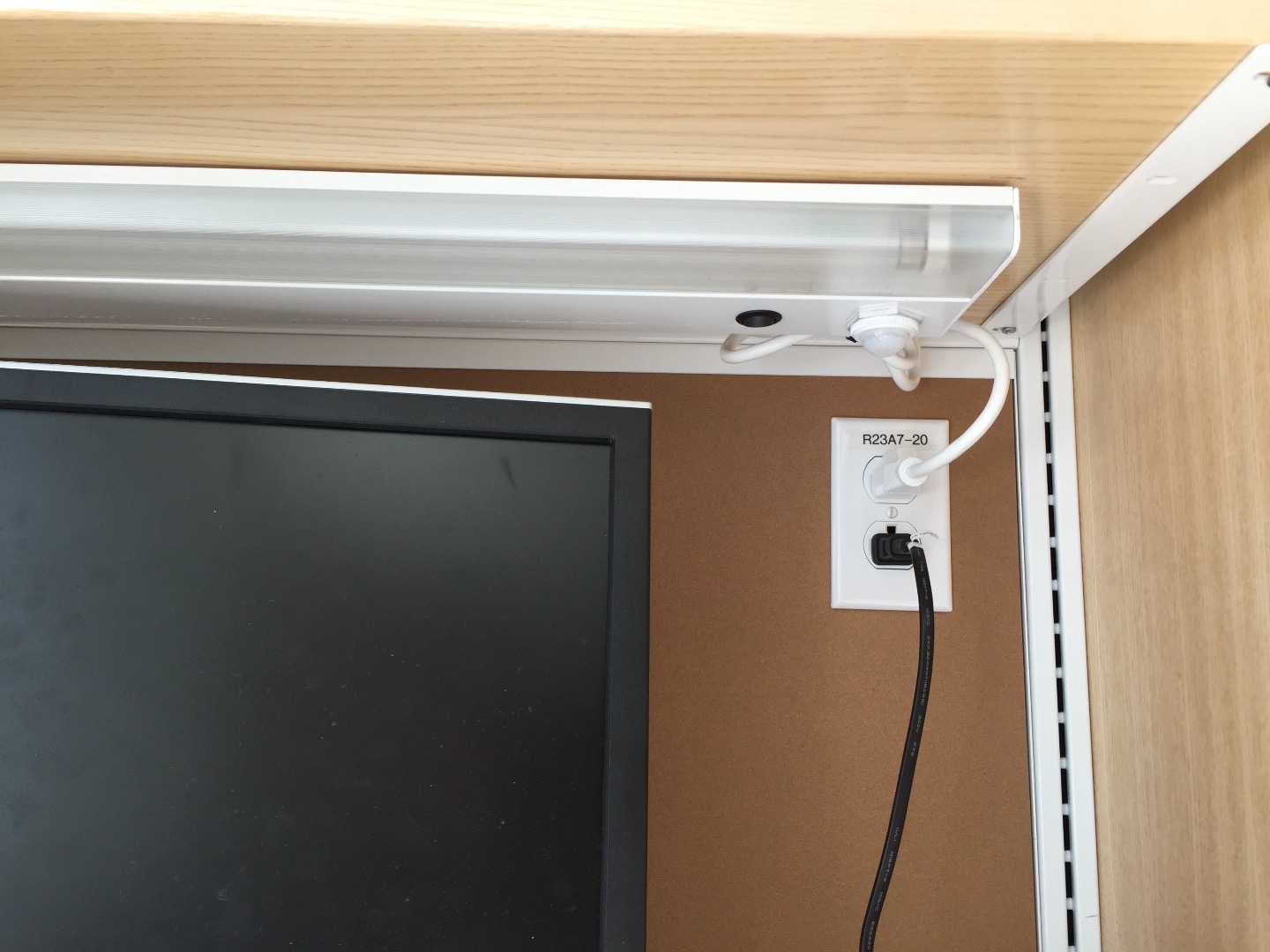
Wow, your new desk came with fancy fluorescent lighting with fancy motion sensors - aww yeah! saving energy to help save the planet - cool!
Except it don't work so well does it... Yes, its a great idea on paper when designing new spaces for people... but yeah - in practice, not so practical.
Here are a couple of ways to help you make the most of what you have at your desk right now as we all know its pretty unlikely anyone is coming to solve the problem anytime soon.
Dial Down Your Sensors Sensitivity
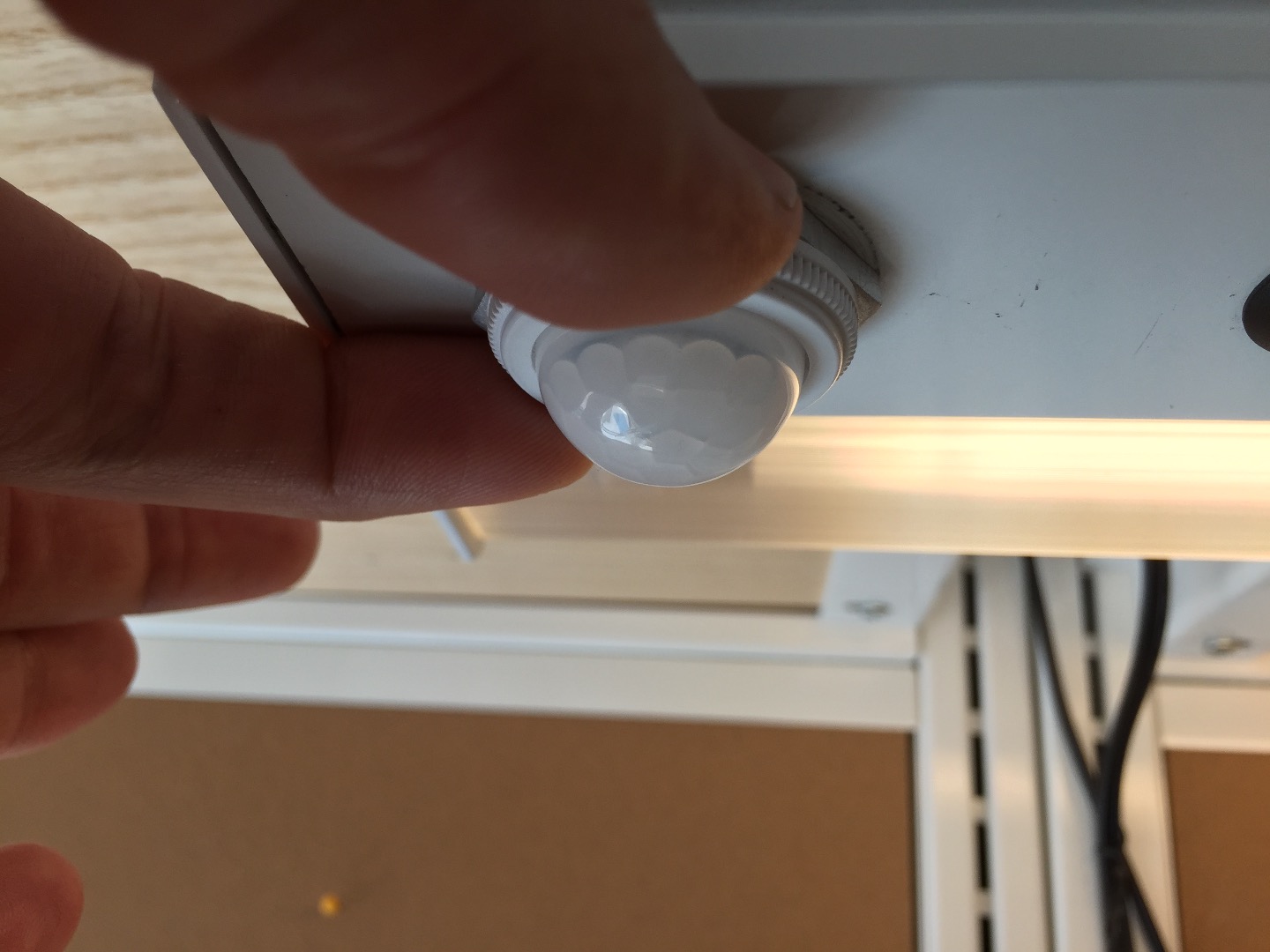
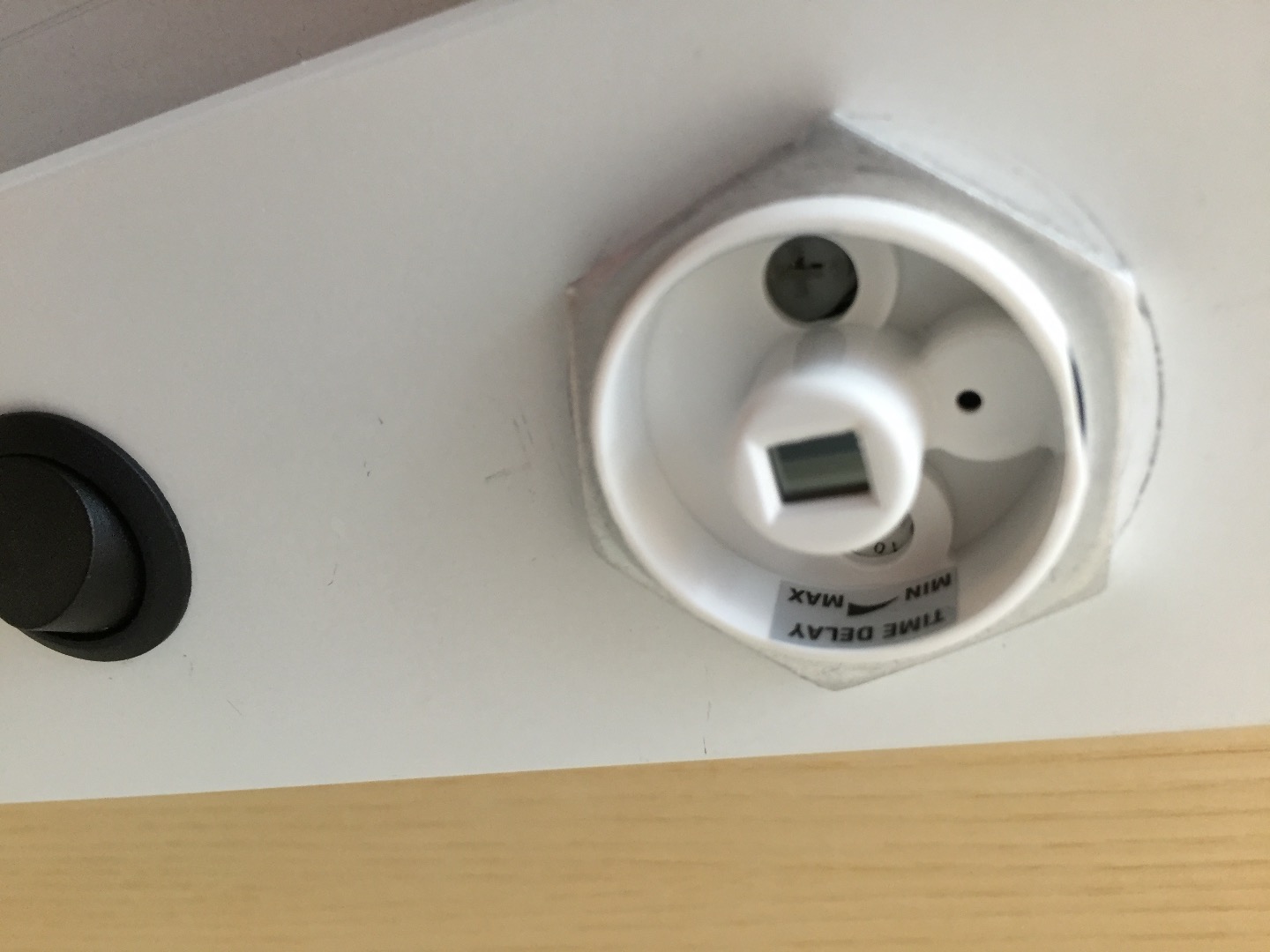
The little clear dome shaped cap on your light is the motion detecting sensor. As an FYI, the sensor is an electronic relay switch and needs to warm up before it works. So if you power your light on and nothing happens, give it a minute. Also,as an FYI it saves the state its in at shutdown, so flicking the main power switch on and off will not trigger the motion sensor.
Now, lets check and adjust the sensitivity of the sensor:
If you carefully unscrew just the dome (not the steel retaining collar) - you will see 2 small adjustment knobs with adjacent labels.
The BLACK knob is labeled "Light Level" - This controls the sensor going on and off in response to ambient lighting. Make sure it is at the factory default of "Maximum" (fully clockwise). If it is less than bright sun or another desk light could turn off your light.
The WHITE adjustment knob is labeled "Time Delay" and does just what it says, it keeps the light on for 'X' amount of minutes after the motion sensor has been triggered. This is one has been set to "MIN" on most lights, which is only about 30-60 seconds before the sensor needs to be tripped again. (Not so handy for someone trying to read of course)
Using a small #1 philips head screw driver (or equivalent), turn the dial clockwise to its MAX setting. This is a 30 minute interval.
~ OR ~ Disconnect the Sensor Completely...
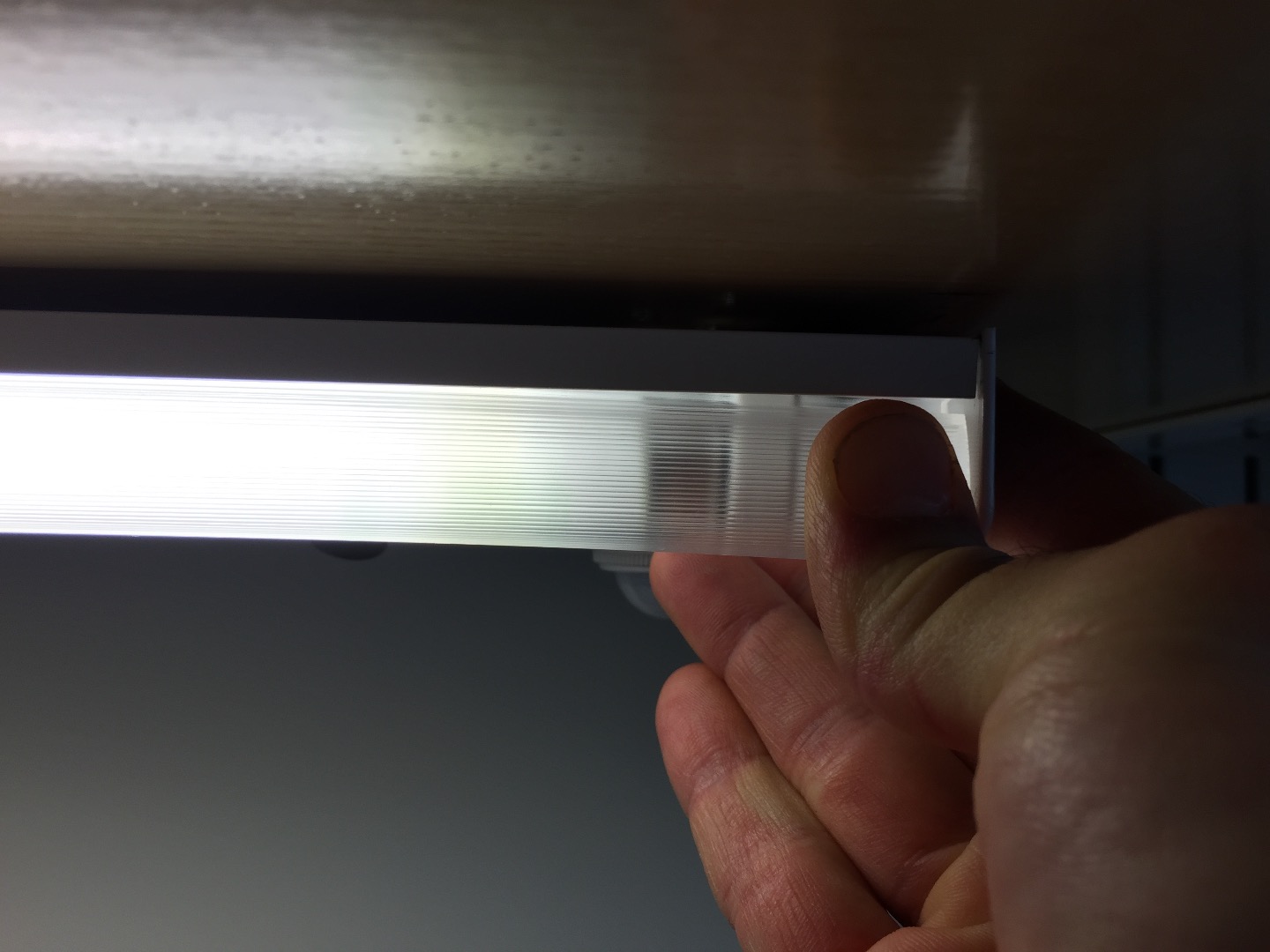
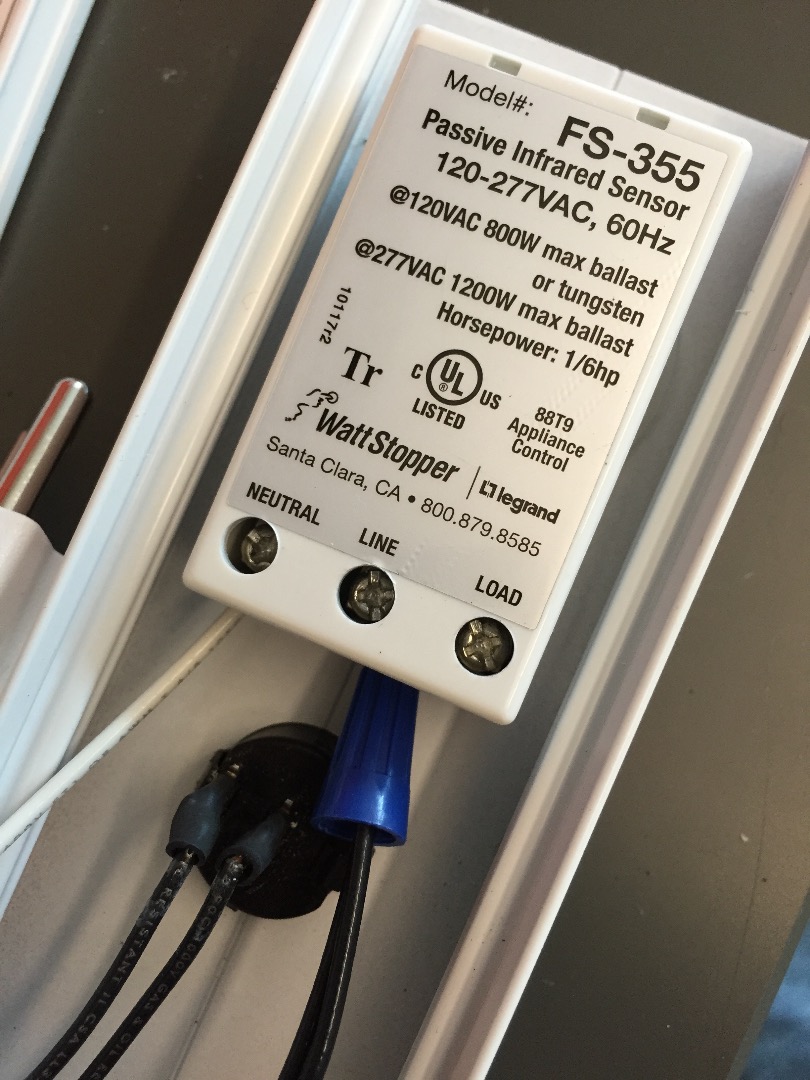
I found that the 30 minute interval was still not enough during late nights here in the lab, so I disconnected my motion sensor entirely.
Disclaimer: This is NOT a recommendation to do so - but if you know what you are doing, it is easy and only takes about 5-10 minutes.
DO NOT FORGET! --- YOU MUST UNPLUG THE LIGHT FIRST!!
Death or one heck of a shock could result if you don't!
Remove the Light Diffuser and the Bulb
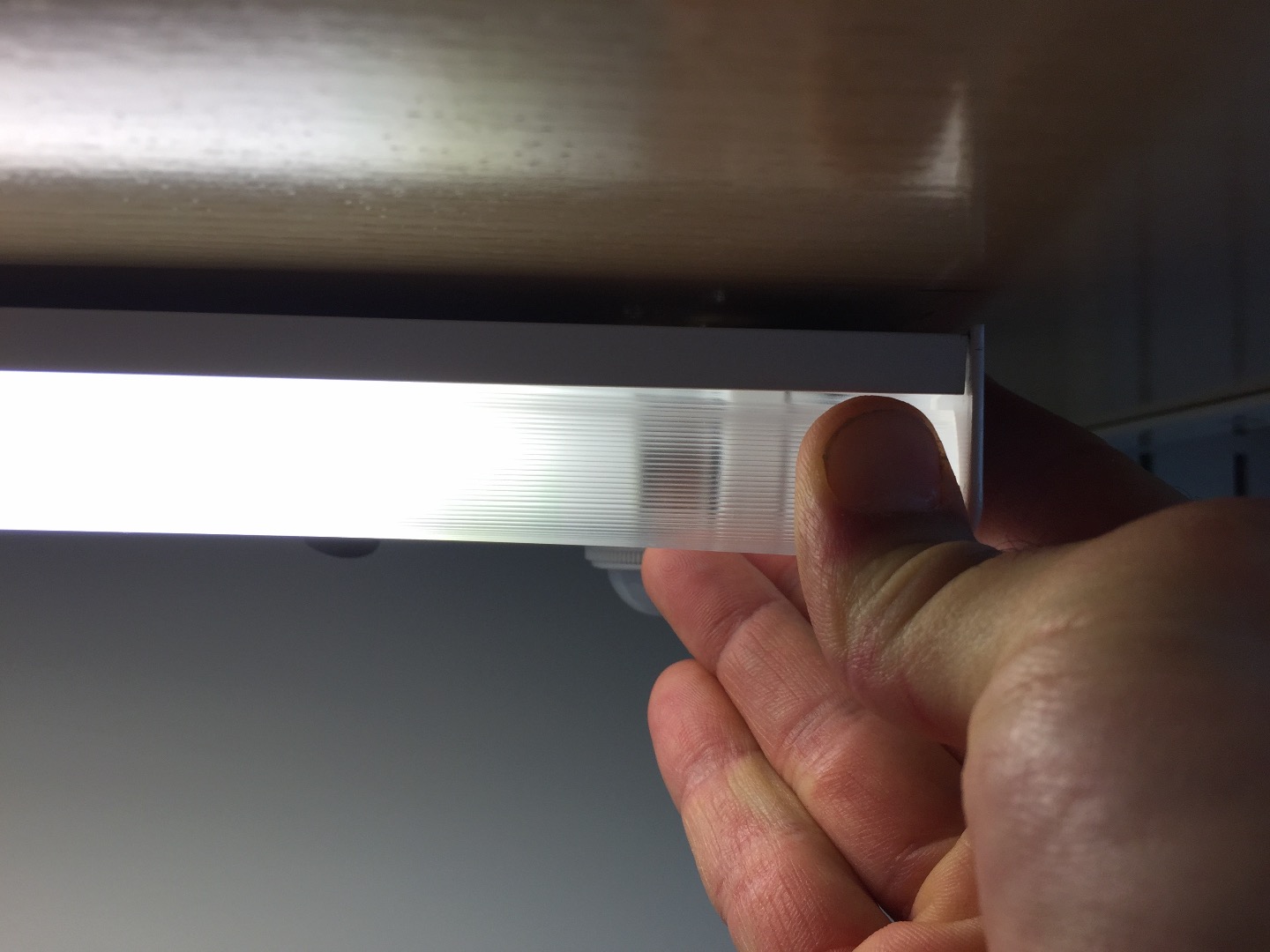
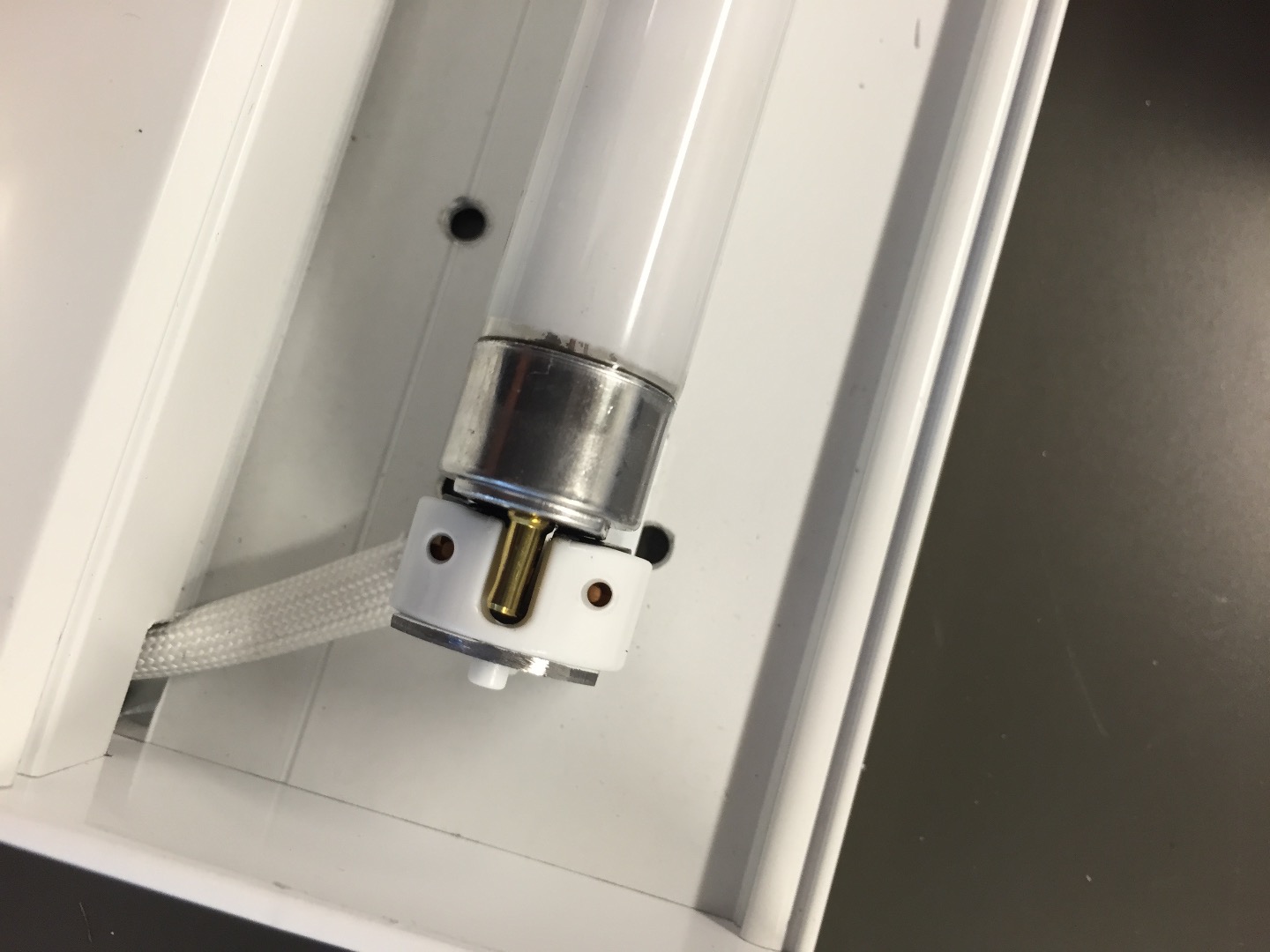
You've unplugged the light first right?
First, you'll need to remove the light diffuser and bulb to get at the screws that hold the light up.
Push on an outside corner of the diffuser to get it unlocked from the channel that it sits in. With two hands, now work this loose edge back to the other side. With one side unlocked, you can remove the entire diffuser.
To remove the T5 bulb, grab the bulb at both ends and gently give it a ¼ turn twist to align the channel on the connector with the pins on the bulb. You should now be able to gently pull out the bulb from the connectors.
This should now give you access to the 2 (or 3) screws holding up the light to the shelf above. Using a #2 philips head screw driver, unscrew these screws being sure you are holding on to the fixture so it doesn't fall. You'll need to unscrew the cord holder as well. Please note that in some cases there are washers that have been used as spacers between the fixture and the shelf. You'll want to slowly pull the fixture away so as not to loose these and more importantly, see where they go back.
Cracking Open the Fixture
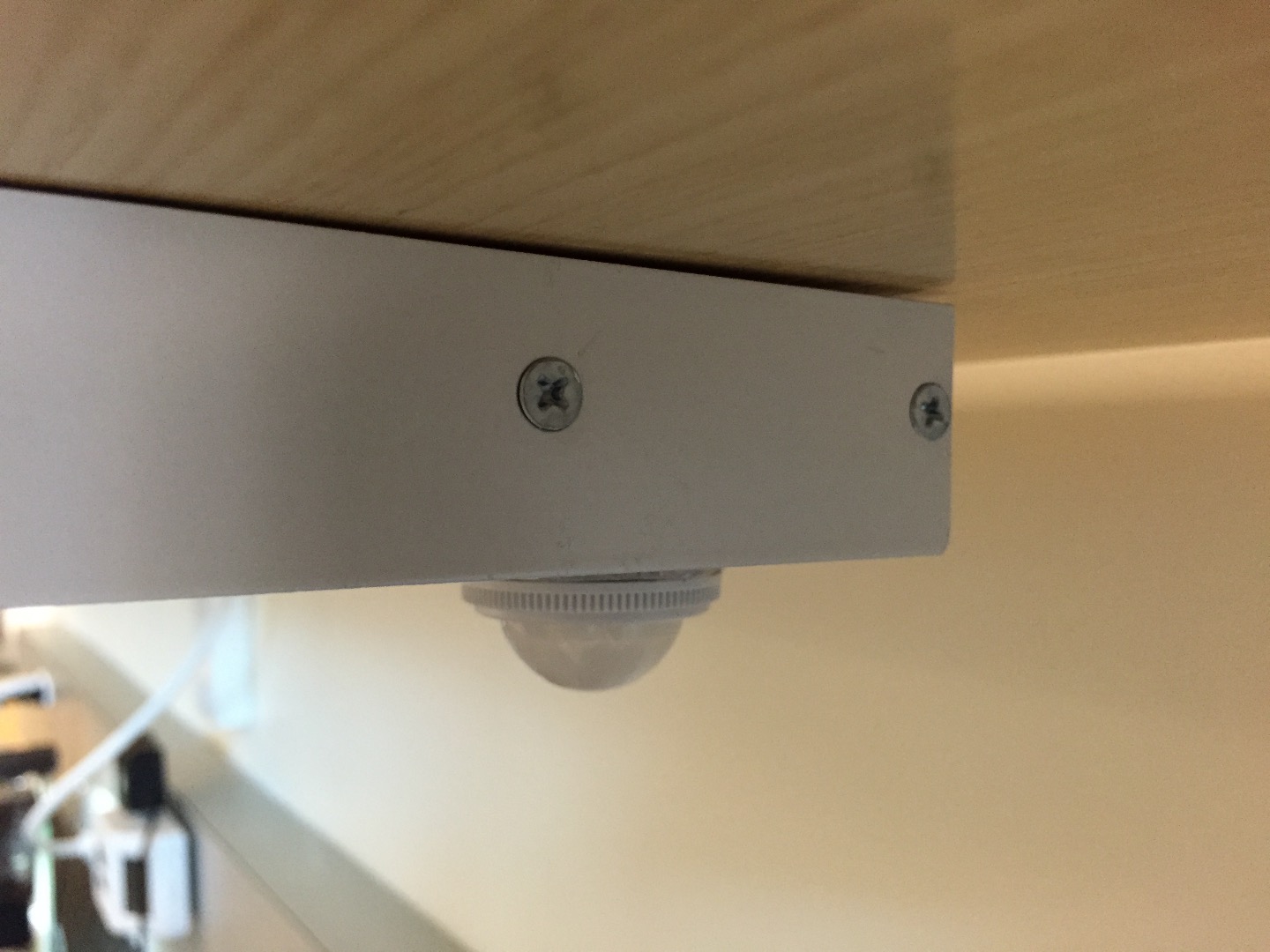
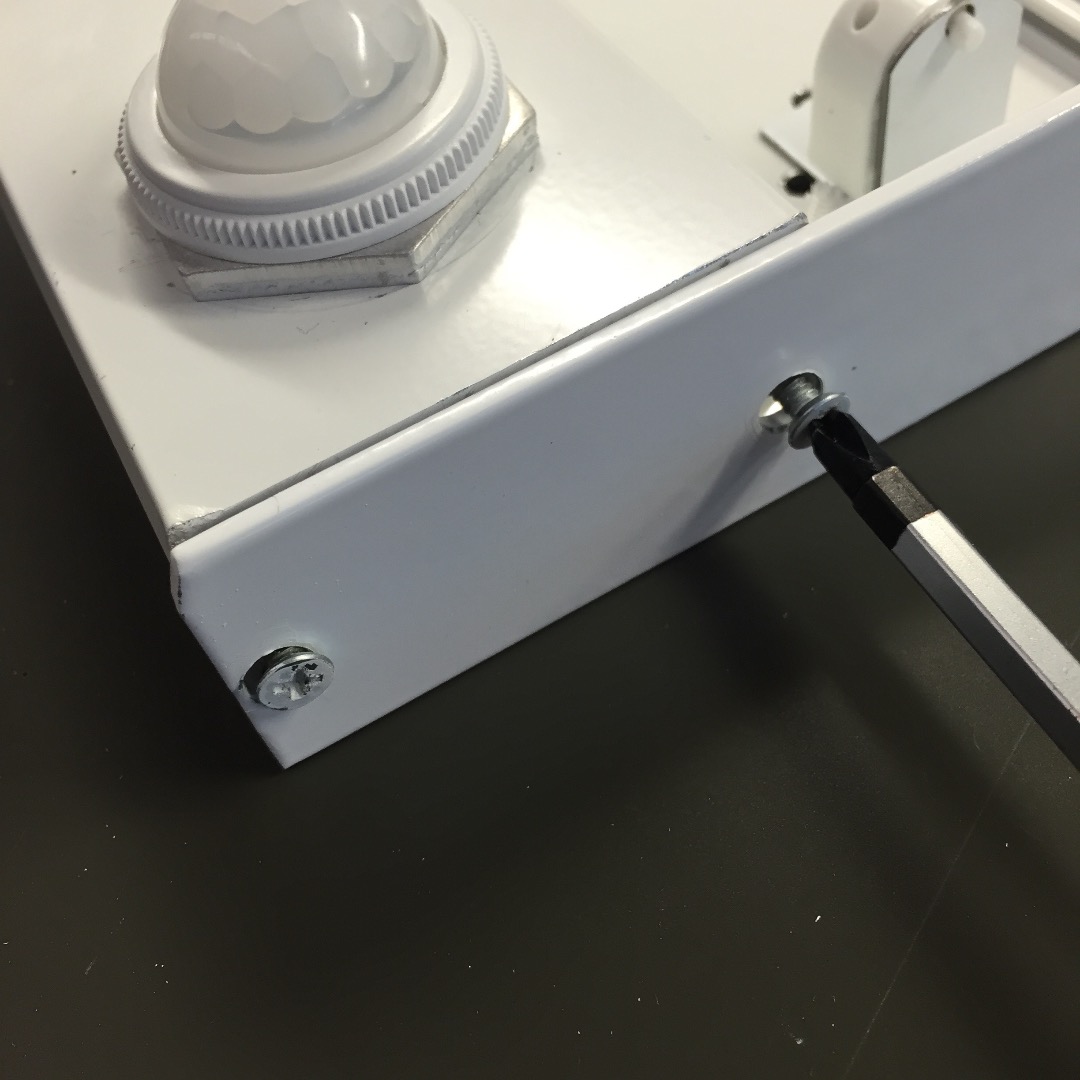
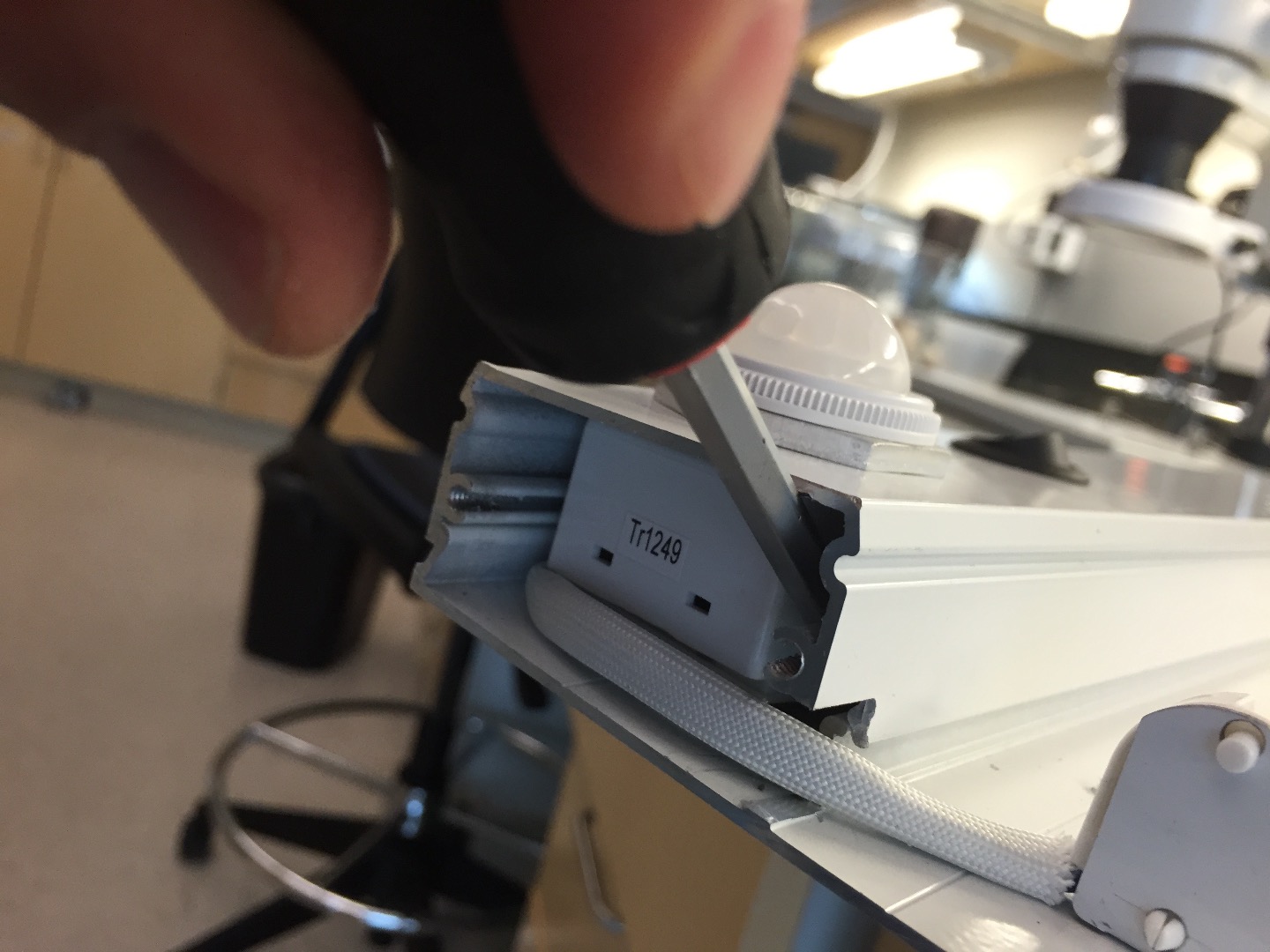
The housing is made of aluminum channel and is held together by tongue and groove channels locked in place with some screws. To be able to separate the housing into two pieces, you will need to take off the cover plates on each end.
Using a #1 or #2 philips screwdriver, remove the 2 small screws from each of the ends of the fixture (4 total). Set these aside safely somewhere along with the end that isn't attached to the plug.
Using a screwdriver or something equivalent, pry one corner of the housing up and away from the other side at the seam closest to the middle of the light fixture. From here, you can work the 2 halves apart with a combination of the screwdriver and your hands.
Please note that the two halves are joined by the motion sensor and power switch wires. You can lay them next two each other to complete the next step.
Isolating the Sensor Control
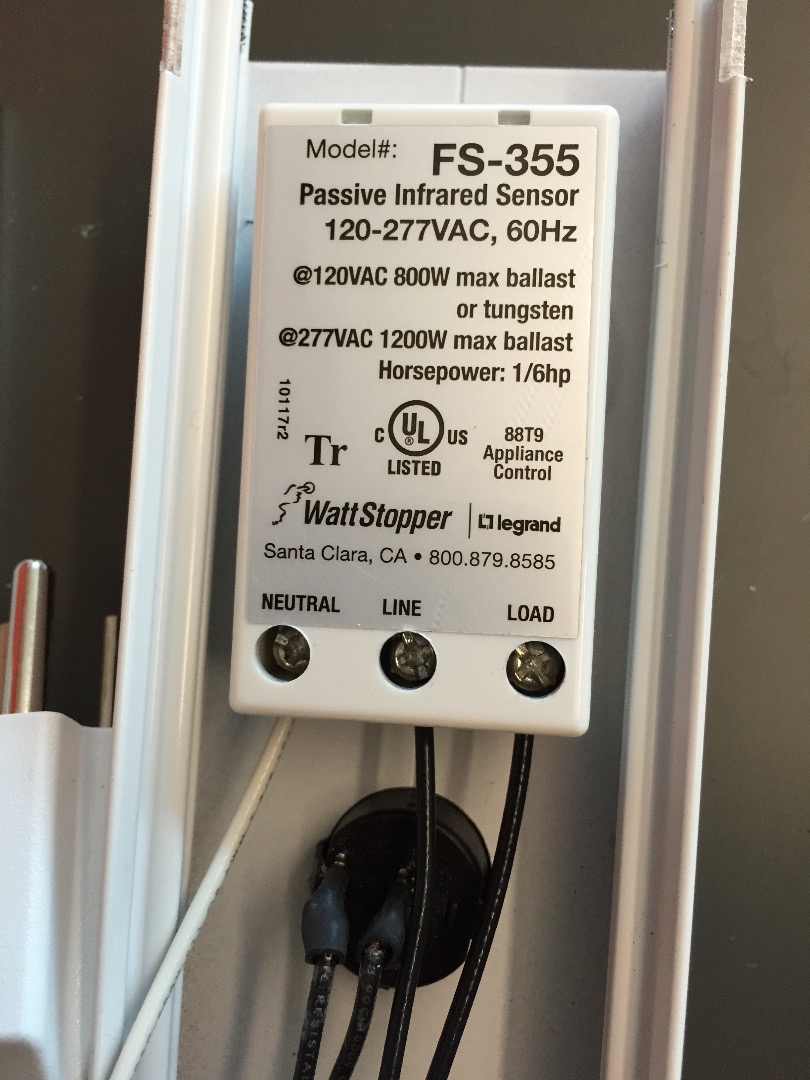
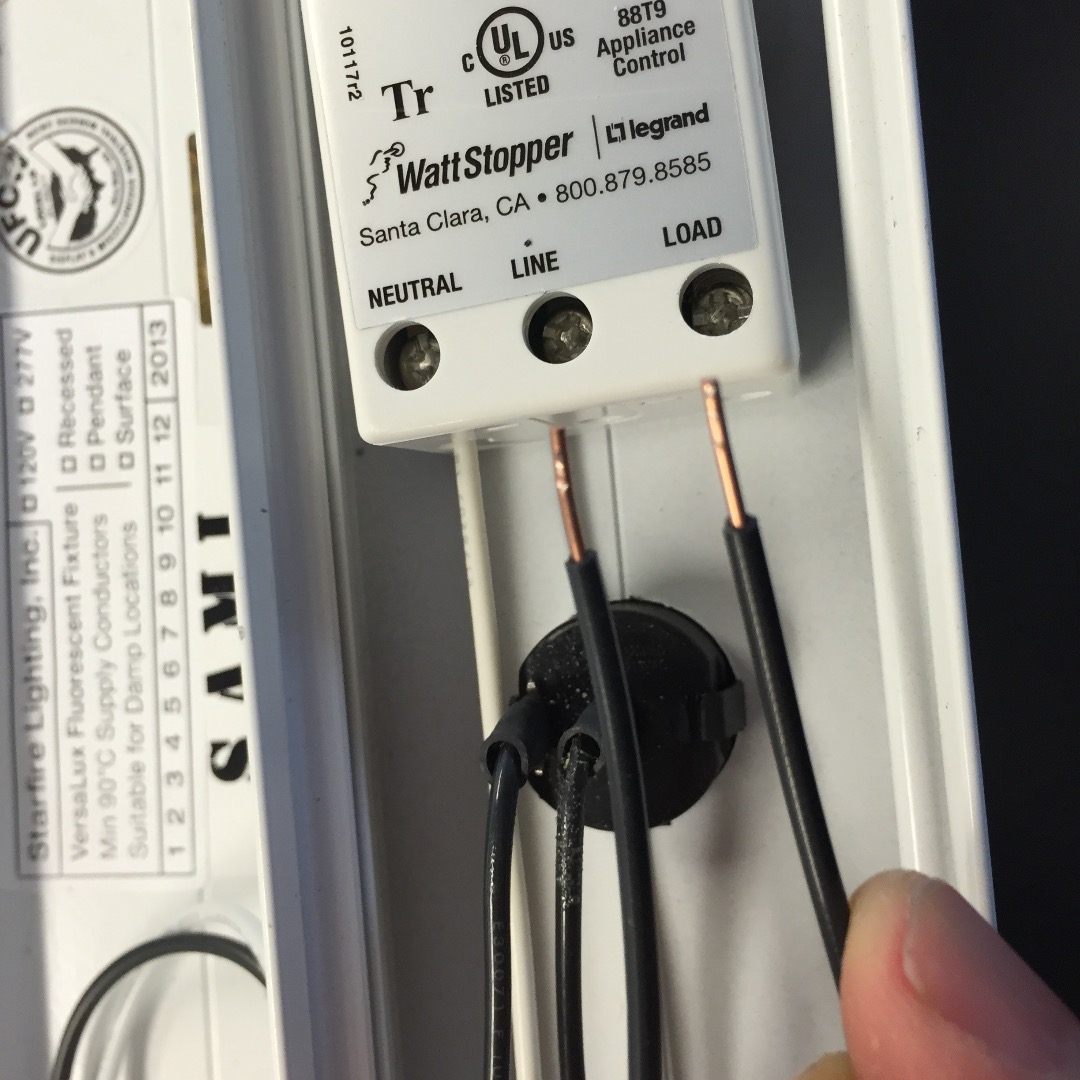
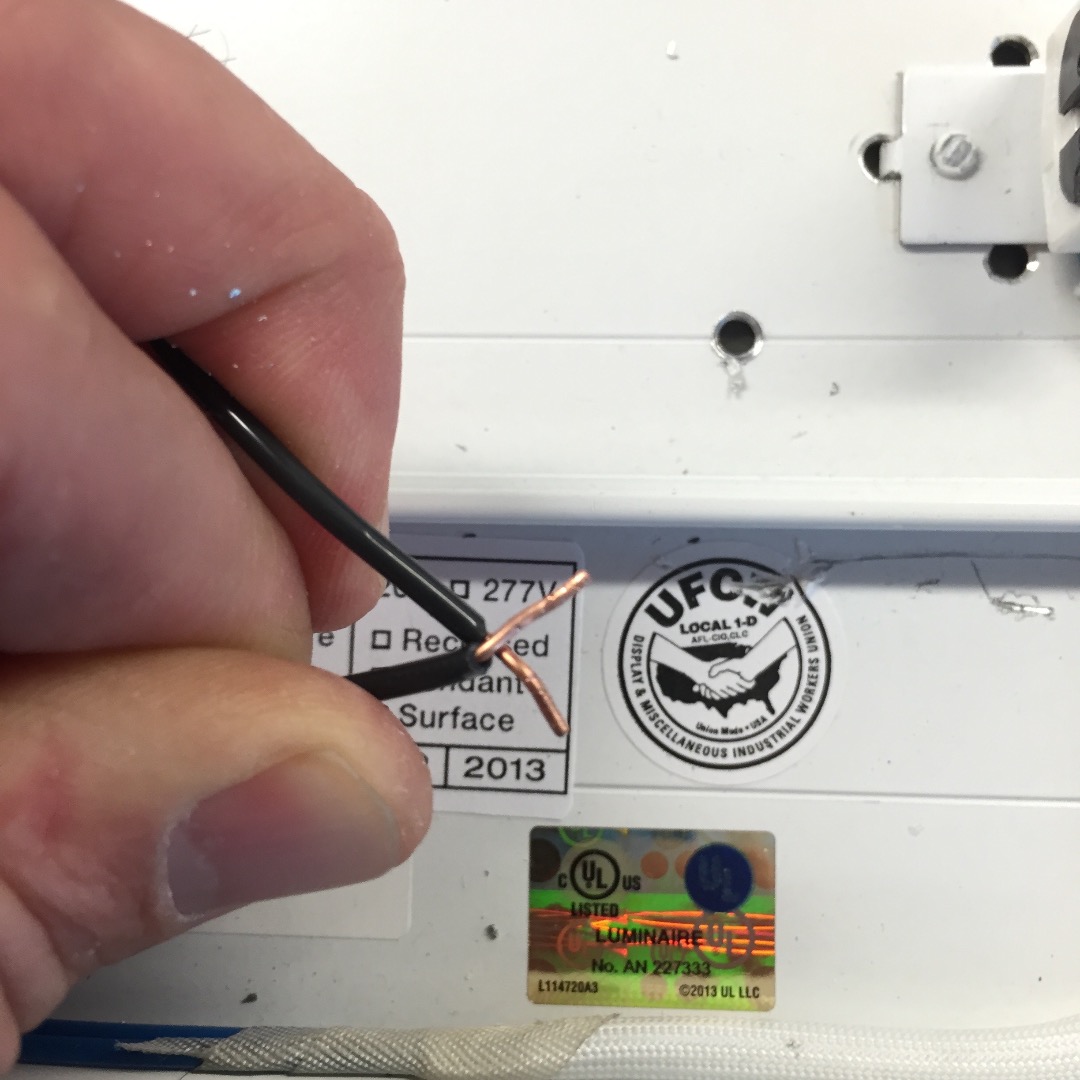
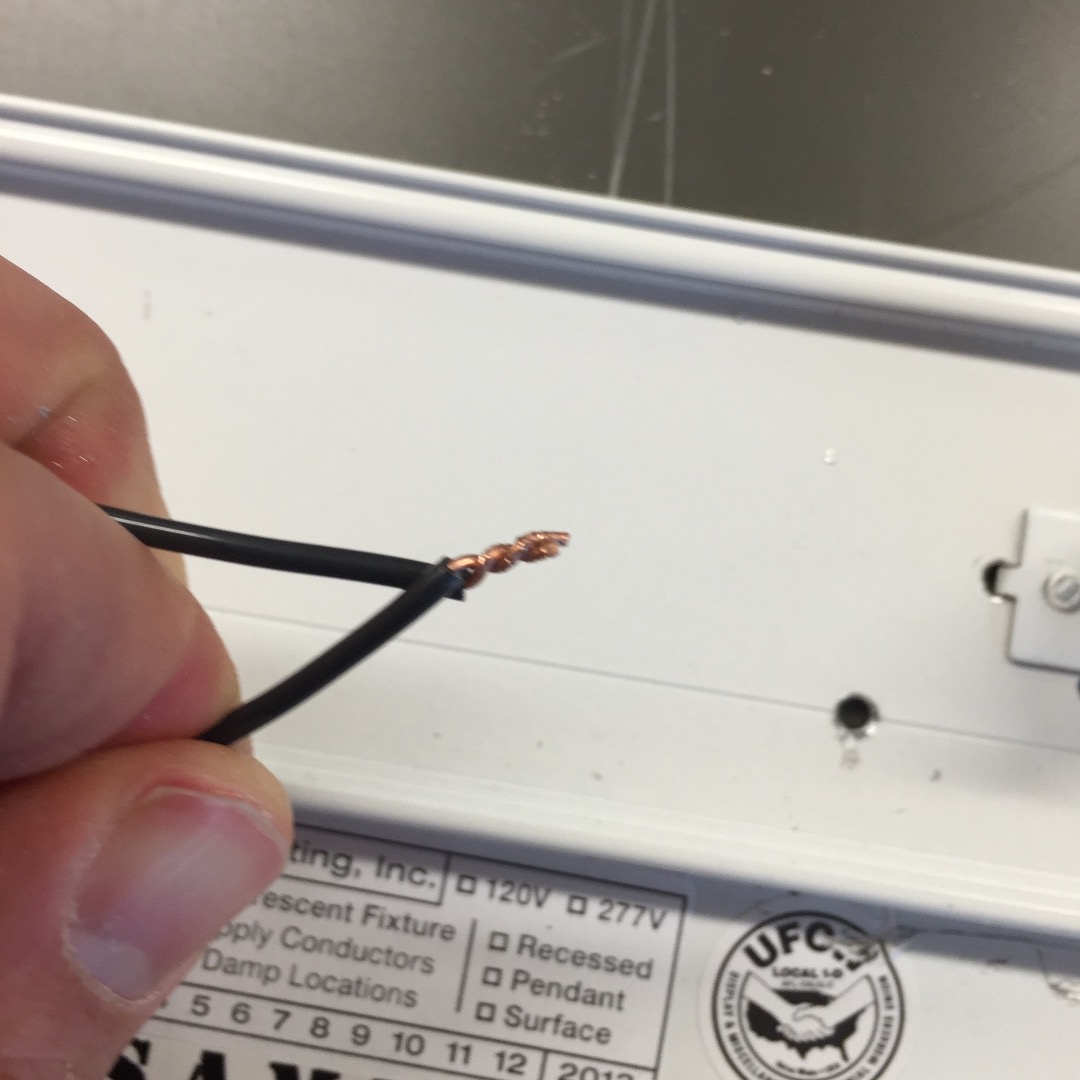
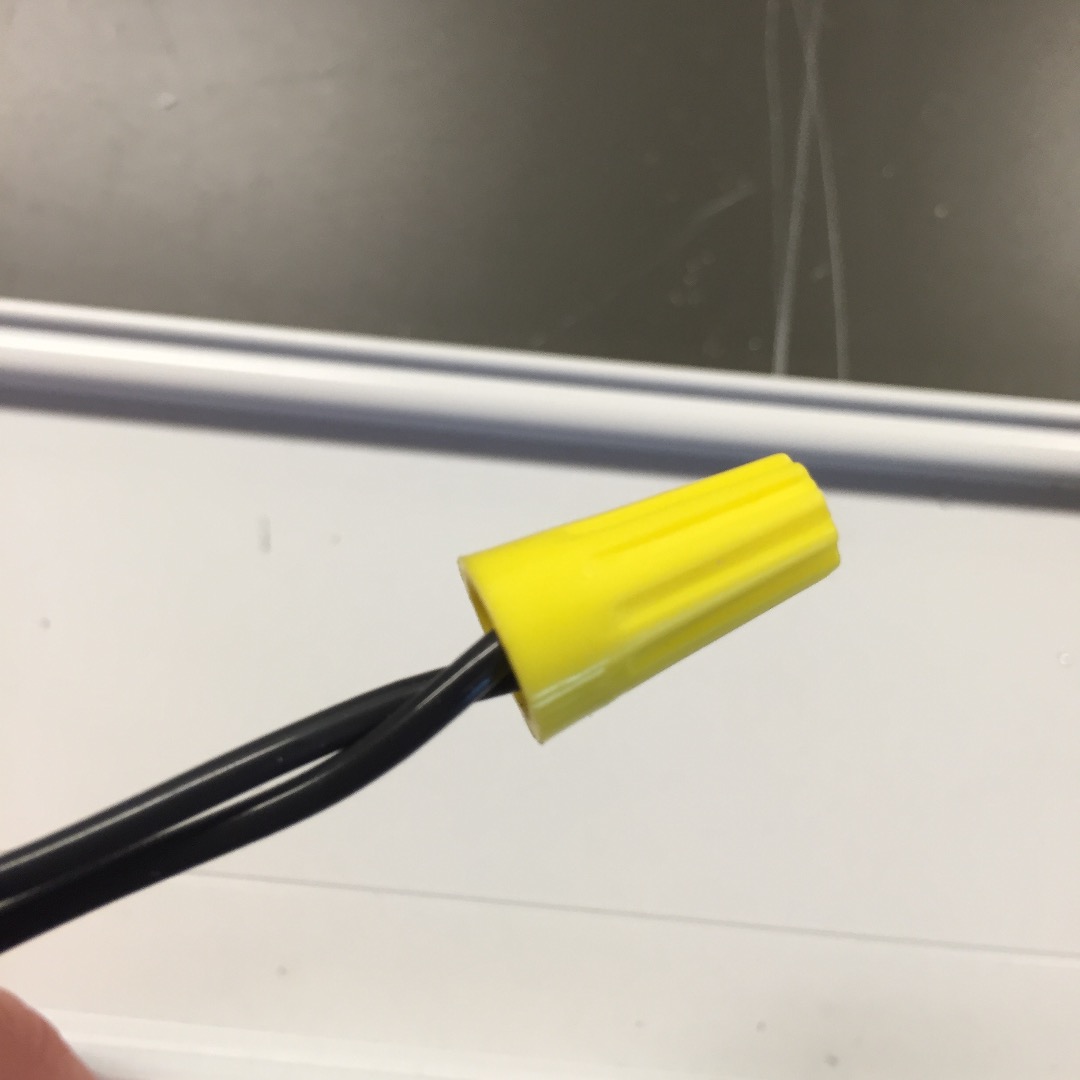
The motion sensor is really two separate parts; a PIR (passive infrared sensor) under the clear dome and a control unit. You can easily remove the control unit from the power loop with the following instructions:
(again... MAKE SURE UNIT IS UNPLUGGED!!)
There are two black wires and a single white wire attached to the control unit. One black wire comes from the main switch and is "LINE" power - that is power coming from the "power lines". The second black wire is the "LOAD" wire - load can be thought of power current that is drawn away from the controller - this LOAD wire goes to the ballast (the big box that converts the incoming "LOAD" voltage to a much higher LINE voltage) that runs that will run the T5 fluorescent bulb.
Using a small #1 or #2 philips screwdriver - loosen the screws that anchor both of the black wires in the controller and remove the wires. Now re-tighten the screws.
Cross these two black wires together at about 90º and using a pair of pliers twist the wires tightly together. Now tightly twist on a wire nut. ( Make sure the wire nut fully covers the exposed ends of the twisted wire pair! A nasty short could happen otherwise! )
Close It All Back Up
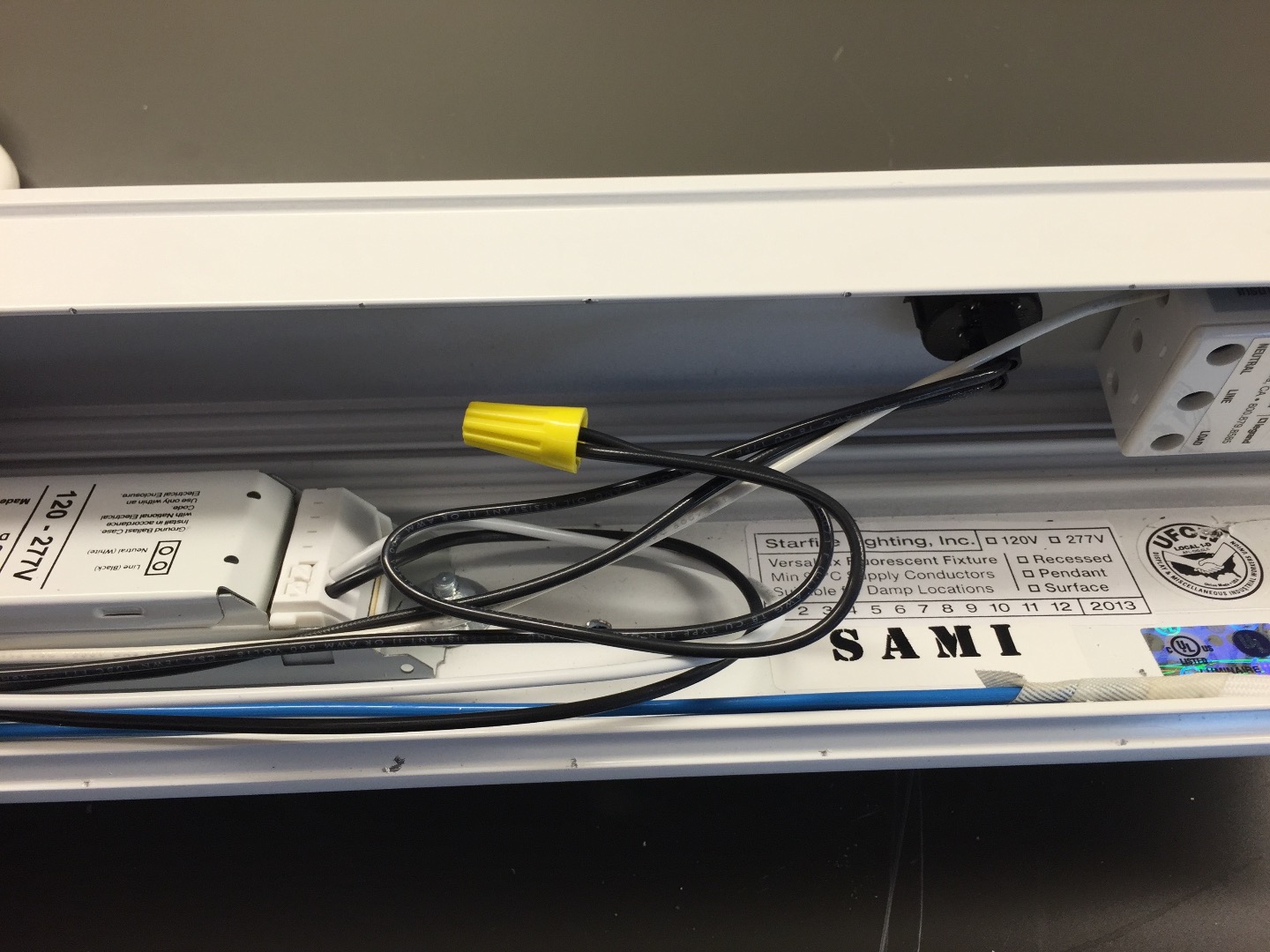
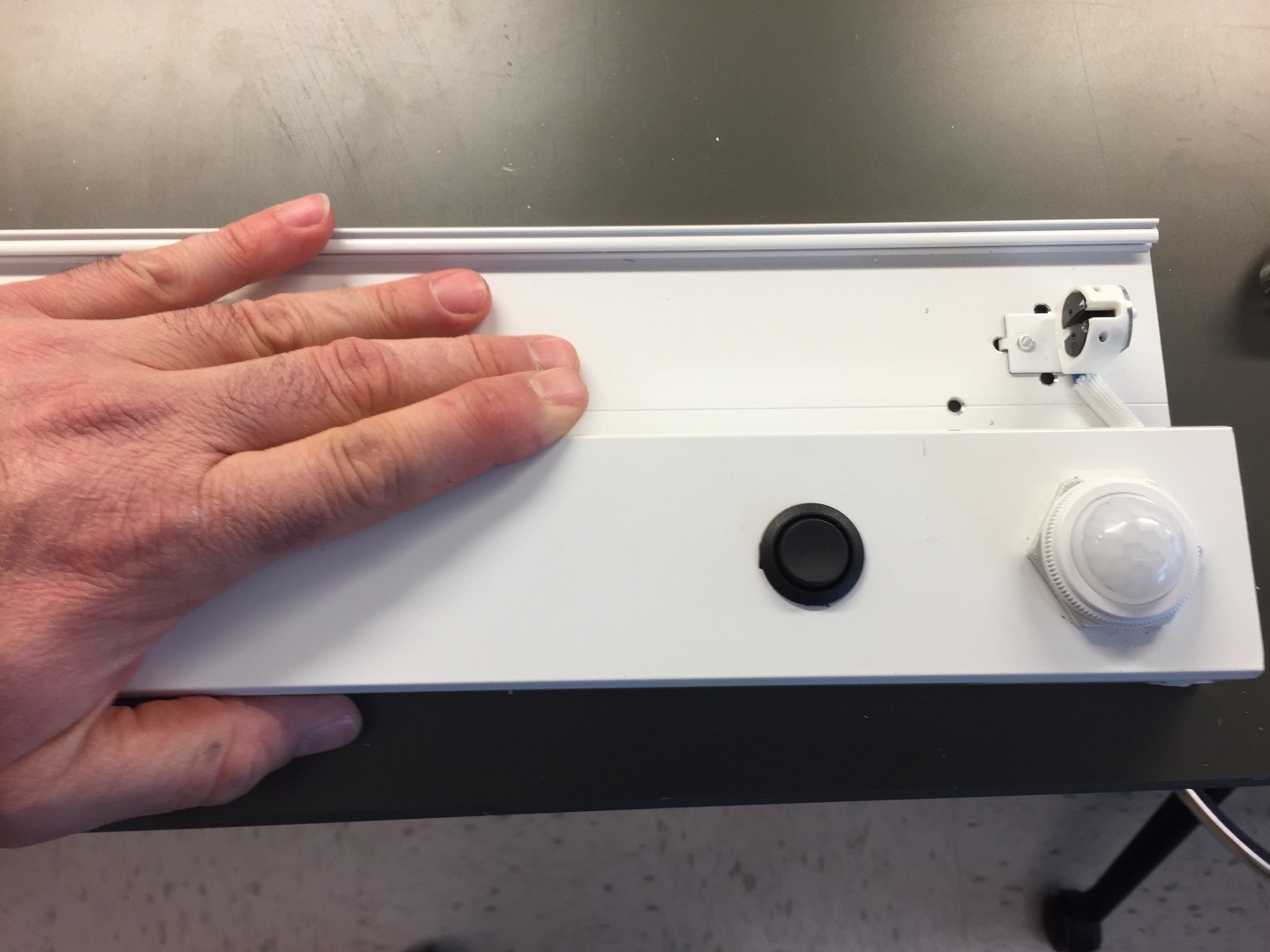
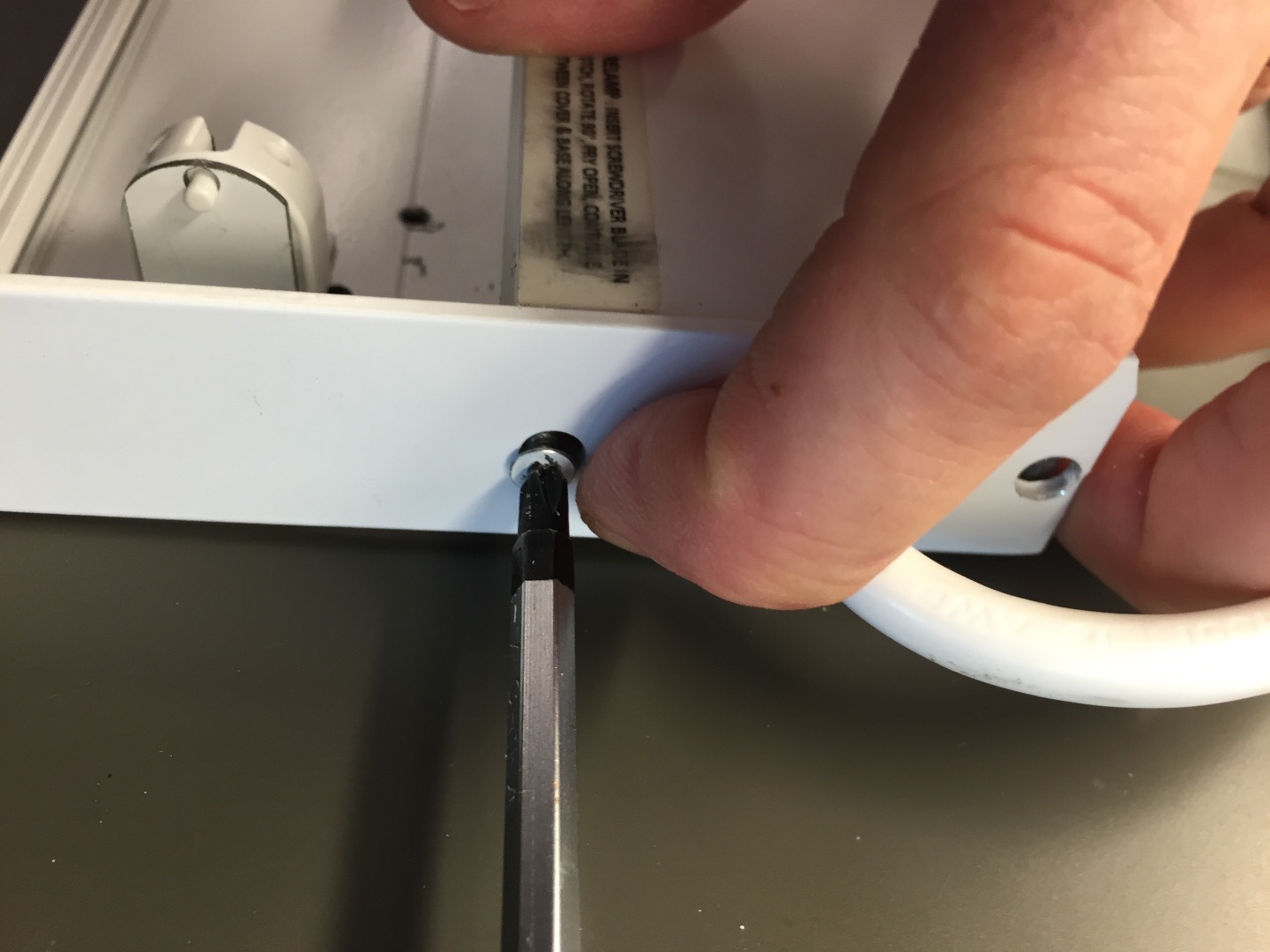
Carefully coil the black wires so they won't get pinched when you close the fixture back up.
Double check that all other wires are also carefully tucked into the housing and then fold the two halves back together.
The small lower half, needs to be placed on at a near vertical angle to the larger, flat top half or it won't snap on easily.
Be sure to align the ends to flush.
Again, make sure that no wires are in the way and then forcefully press down on one end of the two halves to get the channels to click together and then follow up with pressure along the entire edge making sure that the entire seam is connected.
Now screw each of the ends back on.
Please Note - that the fixture end has one corner with a curve that matches the plastic diffuser. (its easy have it backwards - if you missed this, you will have a sharp corner at the diffuser instead of a nice round corner)
Reinstall the Light
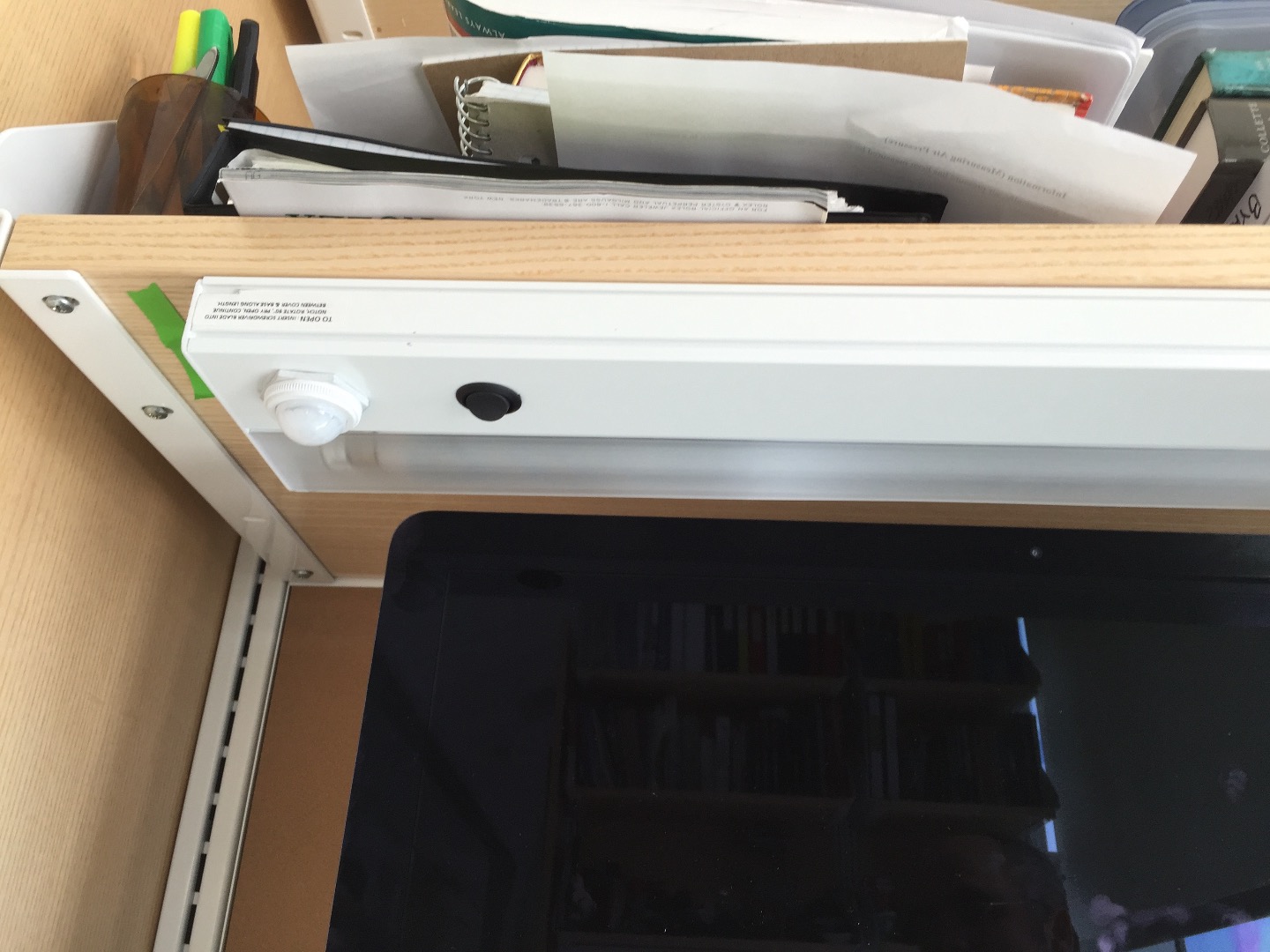
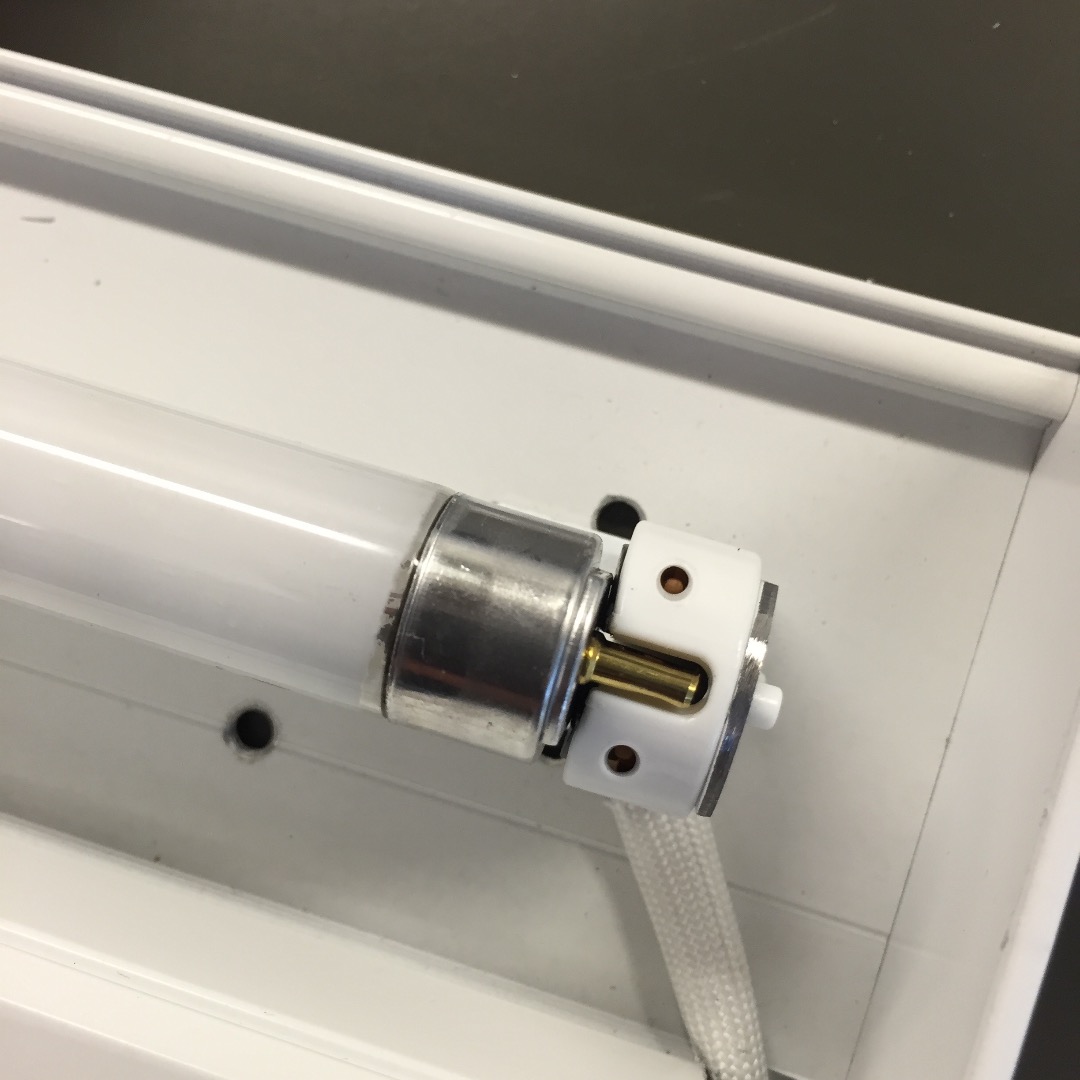
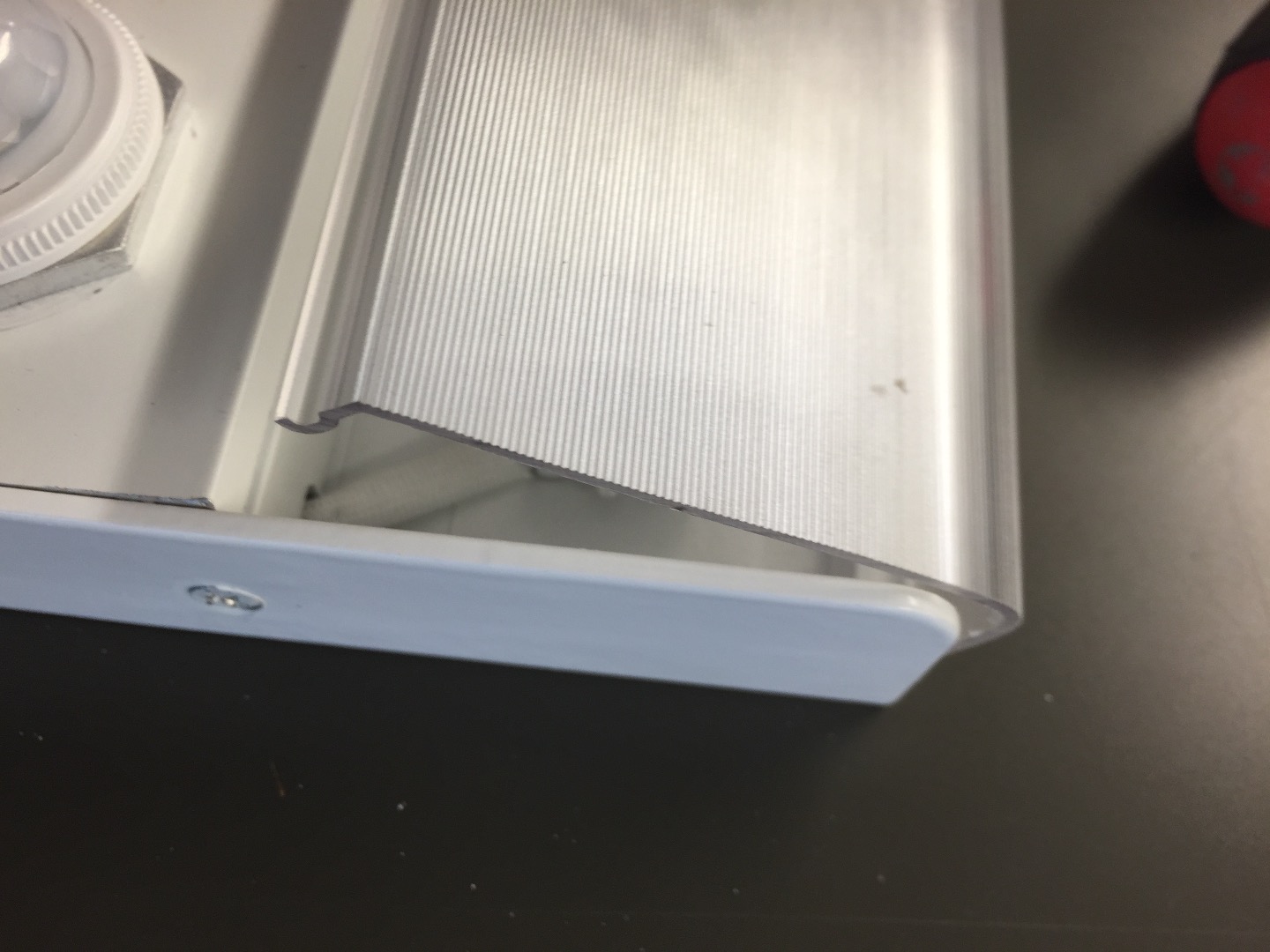
You now need to reattach the light to the shelf using the screws and washers you took off at the beginning.
I installed my backwards with the light bulb facing into the wall instead of out. I do not like the lightbulbshining directly in my eyes when sitting at my desk and find it much more pleasing to have the light turned around. This directs the light at the back wall where it feels less harsh to me. Your preference may vary of course.
Lastly, reinstall the bulb by aligning and inserting the pins to the connector. Give it a ¼ twist till it clicks and then reinstall the diffuser short edge first.
Voila!